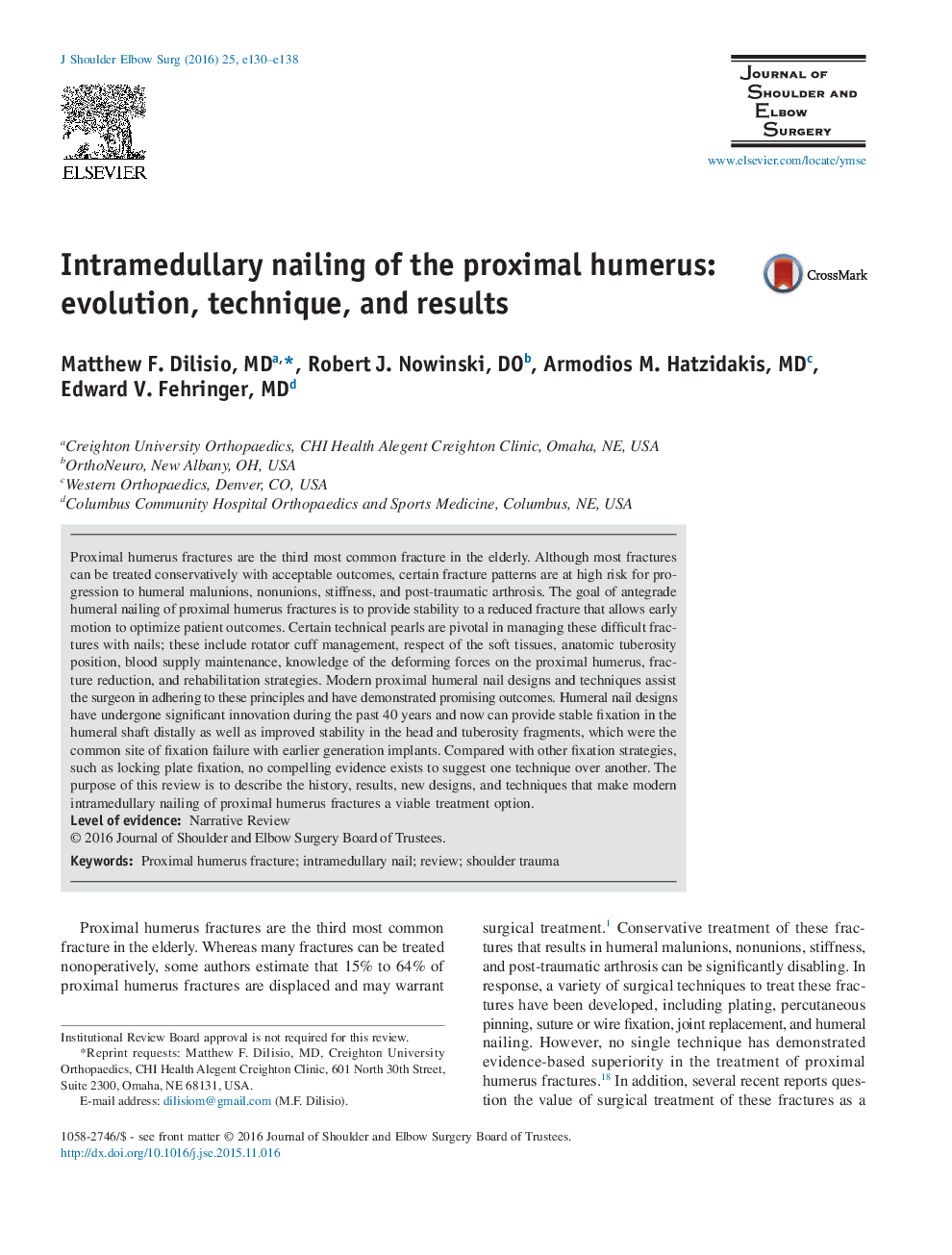| کد مقاله | کد نشریه | سال انتشار | مقاله انگلیسی | نسخه تمام متن |
|---|---|---|---|---|
| 4072955 | 1266965 | 2016 | 9 صفحه PDF | دانلود رایگان |
Proximal humerus fractures are the third most common fracture in the elderly. Although most fractures can be treated conservatively with acceptable outcomes, certain fracture patterns are at high risk for progression to humeral malunions, nonunions, stiffness, and post-traumatic arthrosis. The goal of antegrade humeral nailing of proximal humerus fractures is to provide stability to a reduced fracture that allows early motion to optimize patient outcomes. Certain technical pearls are pivotal in managing these difficult fractures with nails; these include rotator cuff management, respect of the soft tissues, anatomic tuberosity position, blood supply maintenance, knowledge of the deforming forces on the proximal humerus, fracture reduction, and rehabilitation strategies. Modern proximal humeral nail designs and techniques assist the surgeon in adhering to these principles and have demonstrated promising outcomes. Humeral nail designs have undergone significant innovation during the past 40 years and now can provide stable fixation in the humeral shaft distally as well as improved stability in the head and tuberosity fragments, which were the common site of fixation failure with earlier generation implants. Compared with other fixation strategies, such as locking plate fixation, no compelling evidence exists to suggest one technique over another. The purpose of this review is to describe the history, results, new designs, and techniques that make modern intramedullary nailing of proximal humerus fractures a viable treatment option.
Journal: Journal of Shoulder and Elbow Surgery - Volume 25, Issue 5, May 2016, Pages e130–e138
